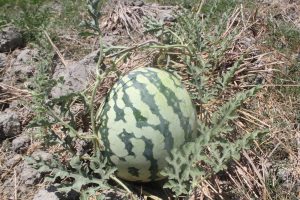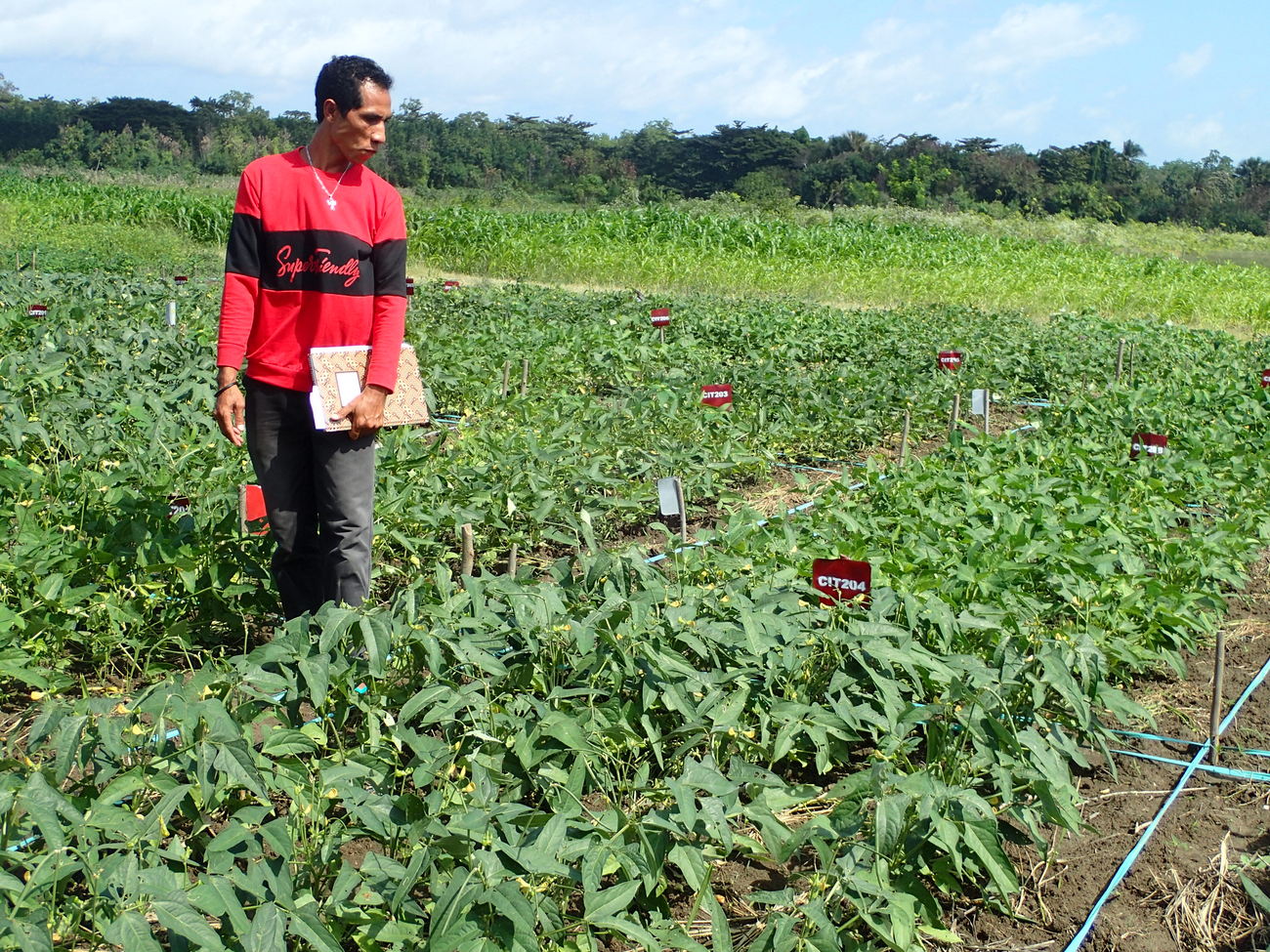Timorese staple legumes like common beans and mung beans provide a vital source of nutrition for the estimated 50 per cent of households in Timor-Leste facing the complex problem of poor nutrition.
But they’re time-consuming to plant and harvest, for too small a yield. And common beans are thought to only grow in cold, upland areas — making them a less-than-ideal option for many farming families.
But our supported researchers are encouraging the planting of these important, nutrient-dense crops, and investigating easy, effective ways to grow these nutritious foods with less labour and more production.
Finding easier ways to plant mung beans
Planting one hectare of mung beans can take 12 people around four days of work — and that excludes the time required to prepare fields, weed, and do any other preparation work. While hardworking families have risen to this challenge for generation, new research from AI-Com-supported researchers shows that mung bean crops can be effectively established when broadcasted: they don’t have to be carefully sown.
Previously, farming families have believed that mung beans must be carefully planted in the ground — a time-consuming and painstaking process. But experiments conducted by AI-Com-supported researchers in July last year at Natarbora Agriculture High School in Manatuto municipality and at Migir in Bobonaro municipality show that mung beans broadcasted, or scattered, into very wet rice paddies can establish and grow well.
While a greater number of seeds are used in broadcasting than in planting, and a lower number of seeds germinate and grow, families save significant time and effort while still producing good yields — reducing labour costs and achieving a greater dollar return for each day a family spends farming.
Planting crops together to grow more with less water
Our supported researchers are conducting experiments to investigate the best time and method for planting crops like mung beans and common beans together with crops like rice and corn, to maximise farming families’ yields from the same to’os or natar without requiring extra land or significant extra work or resources.
Research conducted in July and August 2017 at Natarbora Agriculture High School investigated the effects of relay cropping on mung bean and rice crops — sowing one crop before the first is harvested, to minimise water requirements and maximise land output. Researchers tested ways of planting mung bean seeds into an established rice crop at intervals of one, five and 10 days before the rice harvest, and with different seedling rates, finding that mung bean plants produce the greatest yields when sown at the highest seed density immediately after flood water was removed from the field.
Similarly, at the Ministry of Agriculture and Fisheries’ research station at Betano, researchers have tried intercropping common beans with corn in the second cooler season — planting one crop alongside the other. In experiments conducted between June and October 2017, corn and common beans were planted independently, together, and with corn planted two weeks after common beans. While the monoculture crops gave the highest yield, the intercropping system was found to be 20 per cent more effective — offering an easier way for a diverse dinner plate than planting each crop separately.
Experimental planting enabling new crops for families
While few families would doubt that legumes like mung beans and common beans are an important source of protein and minerals, families living in the flat coastal areas would say they can’t grow them. Because that’s the truth — in places like Dili and Suai, it’s believed to be too hot for the cold-climate common beans, which grow at altitudes of 1,000 metres above sea level.
But our supported researchers at Betano, in Manufahi municipality on Timor-Leste’s south coast — a mere 11 metres above sea level—have demonstrated that if planted at the right time, common beans can in fact grow successfully at sea level, potentially unlocking the nutritious crop for thousands more families.
Already, Oxfam Timor-Leste has supported the seed group Fitun Naroman, or ‘shining star’, to grow common beans for the first time ever in their village in Suai, using findings from this innovative research — which AI-Com and our supported researchers hope other INGOs, NGOs, agencies and individuals will adapt in their rural development projects to help bring research innovations to farming communities.




